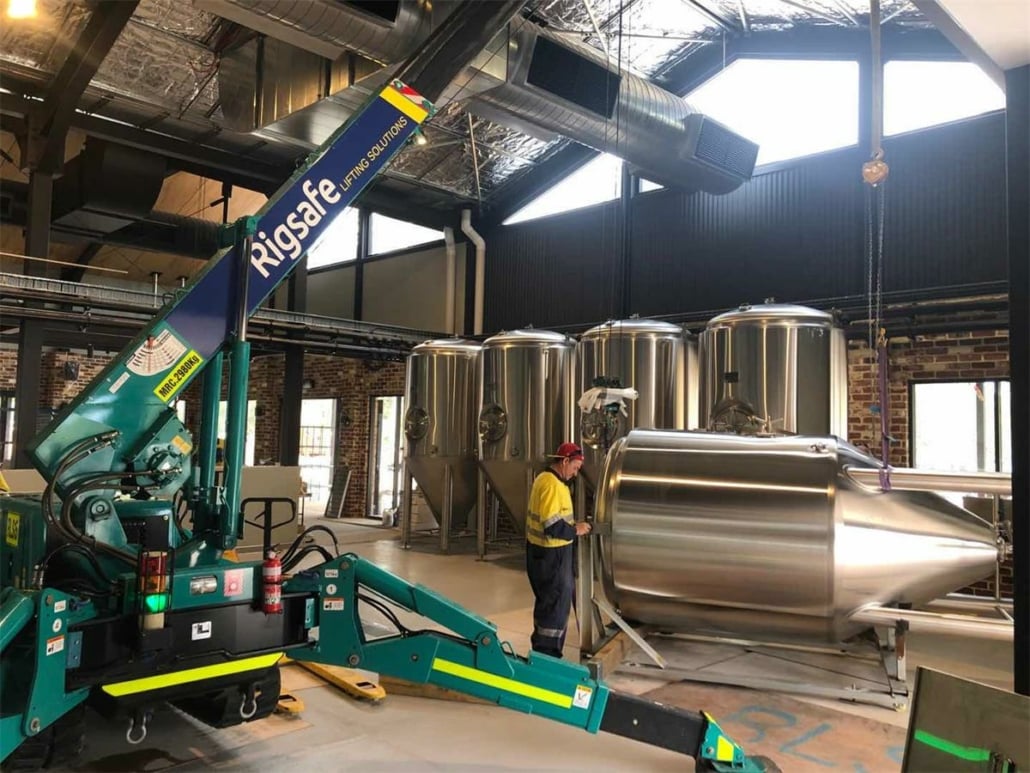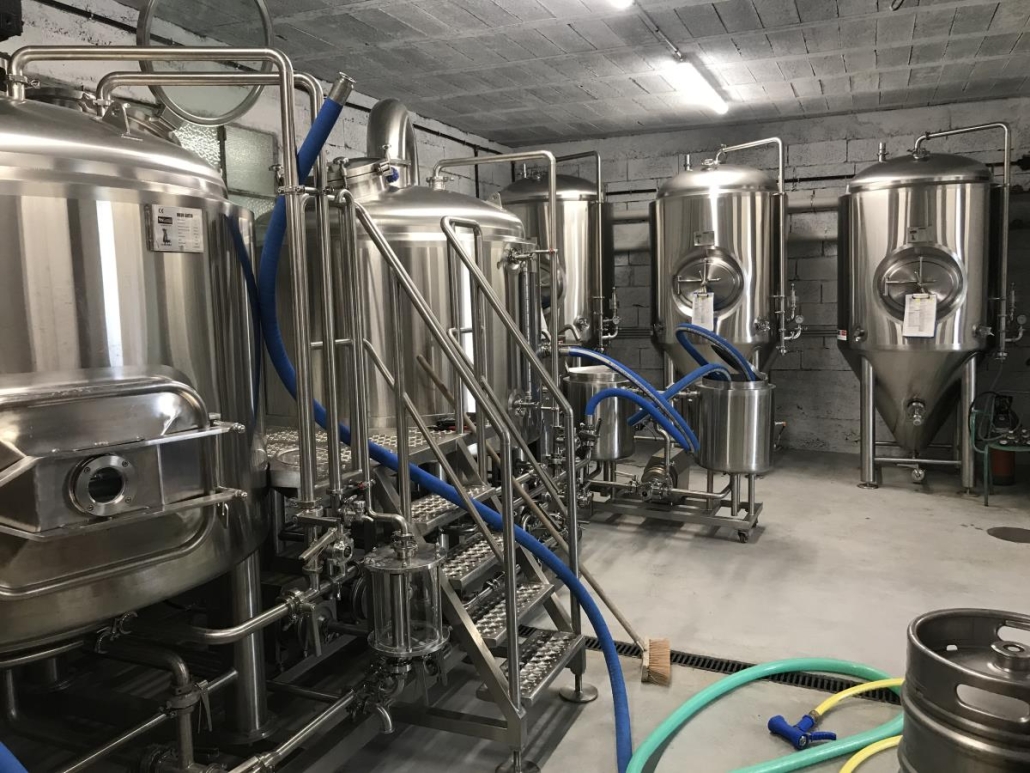How should consider on your new brewery setup
Brewery setup take into account many unexpected issues, Today we’ll look at the process of customizing a brewery project. As a supplier, I’ve seen the needs and scope of brewing projects evolve.
When we first started helping clients put equipment lists together, based on the scope outlined by them, it was much easier. A lot of the requirements were “off-the-shelf” solutions.
Meaning a simple set-up; usually a 2 or 3-vessel system, with enough cellar tanks to produce the beer volumes, was all which was needed.
In the last few years, the process of customizing a brewery project has developed. With breweries often working in niches, which require specialized equipment and requirements.
As a supplier, I’ve enjoyed the challenge. With the feedback from clients, after walking them through these projects, being positive and them appreciative.
When we take on a brewing project, I take it personally, striving to ensure the client has the best outcome. I’m there to answer any questions which come up…
Taking clients initial ideas/scope, then working the project to ensure the equipment we supplied, properly fulfills the needs of the brewery. So, how does the process of customizing a brewery project come together?
Process of Customizing a Brewery setup – Initial Scope
When we get any clients who supposed to build a brewery, we’d understand the demanding as much as possible to tailor this system specially, Like:-
- How big is your planned brewhouse?
- What type of beers will you be making?
- Do you already have a location?
- Are you planning to use a lot of automation for the brewhouse?
- What are your predicted sales for year one, two and three?
Considering much clients who even if experienced on the brewing, however lack of experiences on equipment / engineering, Got some basic answers of above that help us have a brief understanding on this job and then we can review the initial demanding and probably have a few our recommendation on the configuration or structures. Get to know YoLong.
Brewery setup size
In modern craft brewing sizing your brewhouse, has never been so important. As the market gets more competitive, every single day.
Ensuring a brewery can keep up with demand, offer new brews and keep the beer poured/packaged fresh, is a balancing act.
There’ll be one or two brews which will sell at volume. These beers always need to be in stock.
Whilst some of the more unique brews, will sell more slowly. So, a brewery doesn’t want to produce these beers at volume. As they will not be fresh, after some time.
Having a smaller brewhouse which can make multiple batches per day, is often the best solution for a brewhouse which plans on being flexible as well as dynamic.
This leads to a discussion about the two main options, either…
- Having a main brewhouse and a pilot system
- Or having one main brewery and different sized cellar tanks

What’s the best option for a particular project differs but having various size cellar tanks is becoming the norm in craft brewing.
Actually the prior issue for adding a pilot system for the new brewery setup project is the extra cost, Although for the energy equipment like steam generator, glycol that can be shared by the main system and the brewhouse & 3-4 sets of cellars still would be a not-cheap investment especially that won’t bring more margins in the later business period, In the most cases that we talked with client was design their main system with little scale brew capacity,like 1/2 ,1/3, By equip with a few sets of little scale cellars that the pilot system was solved.
The Advantages of Having Larger Cellar Vessels
It made sense to get one larger unitank and brew into it three times over two days. With several advantages to this option:
- Less work brewing three times into one tank, than to three separate ones – for example only need to prep one vessel for wort filling.
- There would be less beer loss, when using one cellar vessel.
- Can use less yeast to pitch the brew, as brewing over two days to fill the tank.
- One larger tank takes up less room in a shipping container than three smaller tanks. Allowing us to fit more cellar tank space into one 40ft shipping container.
These were the main advantages; with this suggestion representing a good cost saving upfront for the client and would also reduce the running costs of the brewery in the future too.
Other configurations of Brewery setup
- Sizing the hot liquor tank (HLT)– Is the brewery going to produce multiple brews per day. Additionally, what else will the HLT be used for?
- Dimensions of the mash tun – Depends on the type of beer to be brewed, and processes involved. More on this later.
- Do my system need to add a CLT ?- Pending
- Automation requirements– Depends on the scale and scope of the project. As well as the overall budget too. However high-auto would still be helpful on the efficiency & reliability.

What is your mainstream beer?
It’s important to ask what styles of beer, a brewery plans to make. As it’ll affect the process for making the beer, as well as design and requirements needed for the brewhouse.
If a brewery was planning to make mostly lagers, while another brewery opted to produce mainly hazy IPAs, then the equipment needed would be different.
This would require differences in both the design of the brewhouse, as well as make-up of the cellar tanks too.
Especially in the modern brewing industry the beer variety are keep enormous, people are looking on the innovation on each period, that caused also a lot of updating on equipment,like tubular heat exchanger, calandria,double kettle whirlpool etc. On the commercial scale system we can basically say there’re not two complete same equipment we ever made.
In general, brewery setup take into account many unexpected issues, If you need help with your project then please feel free to reach out. As I say we’be been working on brewing industrial for a number of years.
We’re happy to discuss your project, and you can email me at: and we look forward to hearing about your brewery project.
Share this entry
Interested in learning more about Brewing Systems including additional details and pricing information? Please use the form below to contact us!
YOLONG BREWERY EQUIPMENT FAQS
- Commercial Brewery / Craft Brewery / Microbrewery / Nanobrewery
- What is The Difference Between Craft Beer and Industrial Beer?
- The Bespoke Differences In Custom Brewing Systems
- Everything You Need to Know About Kettle Souring
- How to Choose Brewing Equipment for Your business?
- How To Choose The-Best Partner To Build Your Commercial Microbrewing System?
- Two Detection Sensors That You Need To Use In Your Brewhouse System
- Remote Control Applications in Brewing Equipment/How does it work?
- How To Clean Your Brand New Brewery Tanks?

